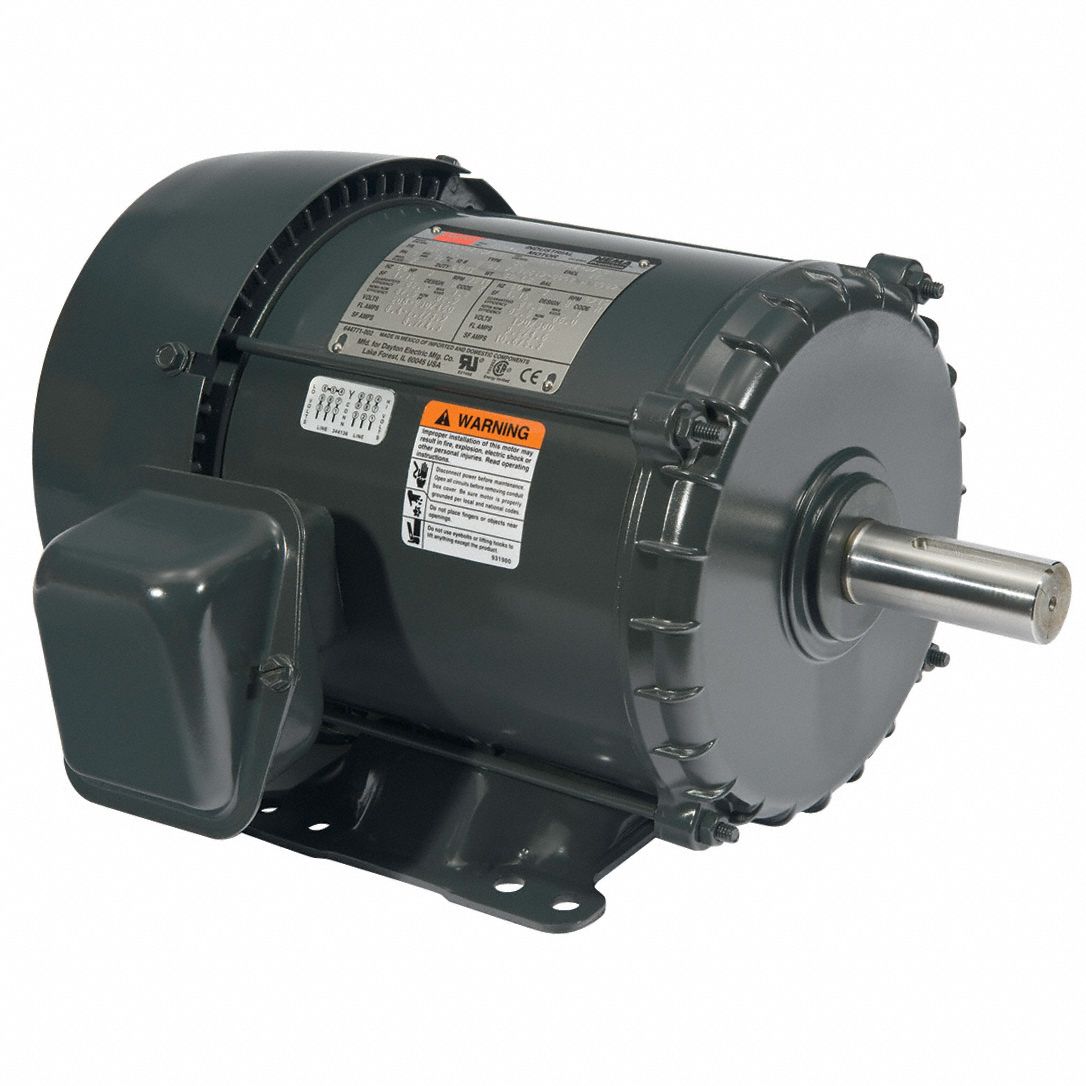

Troubleshooting Common Motor Problems
Troubleshooting Common Motor Problems
By Grainger Editorial Staff 10/11/23


Electric motors run just about everything from small kitchen exhaust fans to commercial HVAC systems to large, industrial assembly lines. Every industry relies on electric motors to operate, sometimes running hundreds of motors non-stop. A widely cited 2011 study from the International Energy Agency determined that electric motors and related systems account for 40% of global energy use. With all of that motorized activity, maintaining motor efficiency is critical to managing your facility’s energy costs.
Troubleshooting Common Motor Problems
Common signs a motor’s efficiency has been compromised, or that it may be time for a replacement, include abnormal noises or vibration, below-normal performance of equipment or output, and overheating. If any of these signs are present, it might be possible to fix the problem with some troubleshooting. For example, if a unit stalls during operation, it could be due to low voltage, or it could be overloaded. The table below lists some common symptoms of motor operational problems, suggests some possible causes, and offers a corrective measure to consider.
Symptom |
Possible Causes |
Corrective Action |
Unit Fails to Operate |
No power |
Consult local power company. |
Blown fuse or open circuit breaker |
• Replace fuse or reset circuit breaker. • Check for grounded motor winding. |
|
Voltage too low at motor terminals due to line drop |
• Consult local power company. • Check for poor connections Increase wire size. |
|
Improper line connections |
Check connections against diagram supplied with unit. |
|
Defective motor |
Repair or replace. |
|
Defective control switch or starter |
Repair or replace. |
|
Overload, motor starter tripped |
• Check and reset overload relay in starter. • Check heater rating against gear motor nameplate current rating. |
|
Gear motor may be overloaded |
• Reduce load or increase gear motor size. • Check load and alignment of coupling. |
|
Unit Stalls During Operation
|
Overload |
Determine cause of overload and either reduce load or increase gear motor size. |
Low voltage |
Verify that nameplate voltage is maintained |
|
Unit Operational, No Output
|
Defective gear(s) |
Check and replace if necessary. |
Gear loose on shaft |
Check and replace if necessary. |
|
Loose coupling, sheave or sprocket |
Check and tighten if necessary. |
|
Sheared key on output shaft |
Replace key and inspect keyway for damage. |
|
Intermittent Rotation of Output Shaft |
Damaged intermediate gear caused by shock load |
Replace and if possible, avoid shock load. |
Excessive Noise
|
Bearing worn or damaged |
Replace. |
Belt or chain too tight |
Adjust tension. |
|
Overhung-load exceeds rating and causes bearing wear |
Correct load and/or replace bearing. |
|
Defective gear(s) |
Replace. |
|
Output shaft misaligned |
Realign. |
|
Loose sheave or sprocket or misaligned coupling |
Tighten set screw(s) and realign coupling. |
|
Defective motor winding |
Repair or replace. |
|
High or unbalanced voltage |
Check wiring connections and consult local power company. |
|
Three-phase motor running single-phase |
Check for open circuit, blown fuse or unbalanced voltage. |
|
Unit Overheats While Running Under Load |
Overloaded, belts or chain too tight |
Reduce load, increase gear motor size. |
High or low voltage |
Check voltage at motor connections, should not be more than 10% above or below. |
|
Faulty connection |
Check and tighten if necessary. |
|
Dirt blocking ventilation openings |
Clean motor. |
|
If three-phase, one phase may be open |
• Check lines for open phase. • Check voltage with gear motor disconnected. • One fuse may be blown. |
|
If three-phase, unbalanced supply voltage |
• Check for faulty connections. • Voltage on all three lines should be balanced within 1%. |
|
Defective motor |
Repair or replace. |
|
Unit Does Not Come Up to Speed or Takes Too Long to Accelerate |
Voltage too low at motor terminals |
• Check for poor connections. • Increase wire size. • If three-phase, check for voltage unbalance. |
Starting load too high |
• Unit may be under size to start load. • Increase unit size. |
|
Load contains a bound condition |
Clear condition. |
|
Excessive loading, tight belts or chain |
• Reduce load and increase unit size. • Adjust belt or chain tension. |
|
Defective gearmotor |
Repair or replace. |
|
Inadequate starting torque High inertia load |
Replace with larger unit. |
Once you've exhausted all of your troubleshooting options, and you've determined it's time for a motor replacement, this form can be a great tool to help narrow down your choices. You can also find some great guidance beginning on page 3 of the online Grainger Catalog.

Safety Management
Warehouse Ergonomics Tips to Help Reduce Strain and Injuries
Warehousing and distribution work often involves physical demands that can lead to strain over time. Learn how OSHA’s Warehousing NEP highlights ergonomic risks and ways to help address them.
![]() Our Latest KnowHow
Our Latest KnowHow

6 Tips to Help Prevent Slips, Trips and Falls
Identify the fall hazards in your workplace and implement a fall safety program. Check out these tips from Grainger so you can mitigate risk.
The information contained in this article is intended for general information purposes only and is based on information available as of the initial date of publication. No representation is made that the information or references are complete or remain current. This article is not a substitute for review of current applicable government regulations, industry standards, or other standards specific to your business and/or activities and should not be construed as legal advice or opinion. Readers with specific questions should refer to the applicable standards or consult with an attorney.













